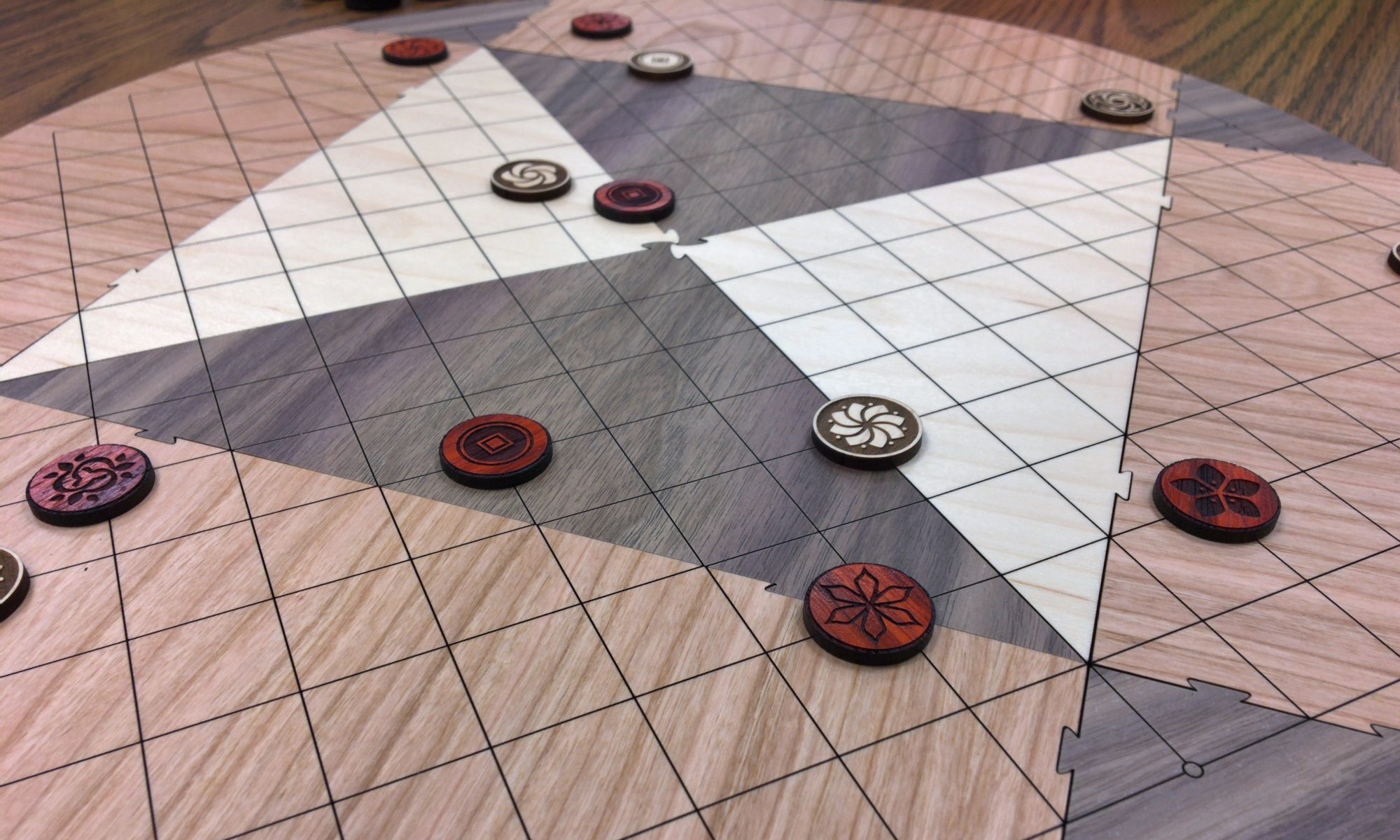Note: Game Under Construction
It seems that Street Pai Sho needs testing and tweaking to be the great game we’d like it to be. Please join The Garden Gate Discord to discuss the various testing game options built into the website and help make it into a great game!
Rules Downloads and Translations
Board Setup
Street Pai Sho is played on a standard Pai Sho board. Tiles are played on the intersections of the lines. Unlike other Pai Sho games, there is only one type of tile in Street Pai Sho. Each player starts the game with 8 tiles placed on the board like so:

Objective
The objective of Street Pai Sho is to be the first player to form Harmonies across all four midlines (or streets).
Playing A Turn
Players alternate taking turns. A turn consists of either moving a tile that is on the board or deploying a new tile onto the board.
Moving A Tile
Tiles can move up to 3 spaces. You can move over your own pieces as you move, but not your opponent’s pieces.
Capturing
Tiles can capture opponent’s tiles by landing on them. Each tile can only capture one opponent’s tile. When capturing a tile, simply place your tile on top of the tile being captured to signify that your tile has a captive tile.
When a tile with a captive is captured, release the captive into it’s owners tile reserve. Later in the game, the freed captive tile can be deployed onto the board later in the game like any other tile.
Deploying A Tile
If your Home Port space is empty and you have less than 16 non-captured pieces on the board, you may place a new tile in your Home Port.

Harmonies
A Harmony is created when two of a player’s tiles are on the same vertical or horizontal line on opposite sides of a midline, with no other tiles between them. A piece on a midline cannot form Harmony.
Look again at the initial board setup. Each player starts with two Harmonies across the vertical midline on his or her side of the board.
Winning
To win the game, you must have at least one Harmony crossing each of the four midlines at the beginning of your turn. That is, when you move into a winning position, your opponent has a chance to stop you. However, you do not have to tell your opponent that you are in a winning position. At the beginning of your turn, you may proclaim victory. If your victory claim is incorrect and you do not have the necessary winning Harmonies, you lose your turn.
Here is an example of a winning scenario for the Guest player (darker tiles):

Note: If at any point during the game a player has no pieces left on the board to move and cannot deploy (if the opponent blocks the player’s Home Port), that player loses. This situation is rare.

You must be logged in to post a comment.